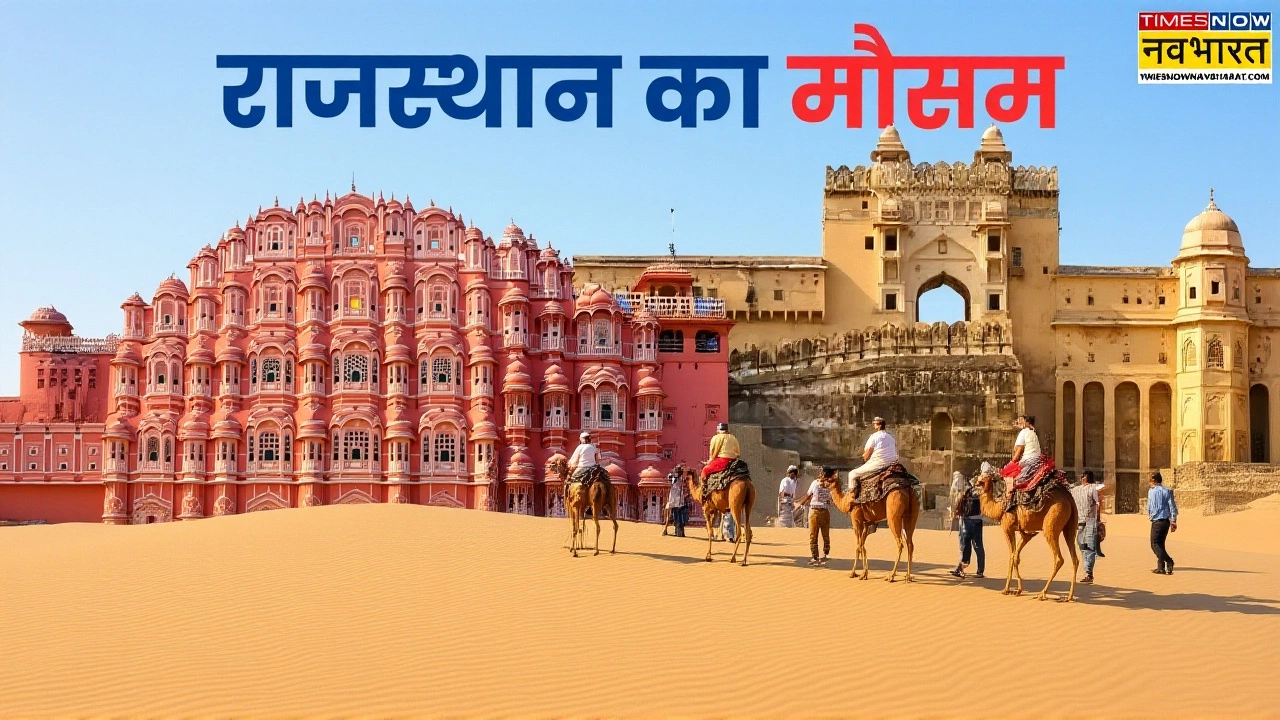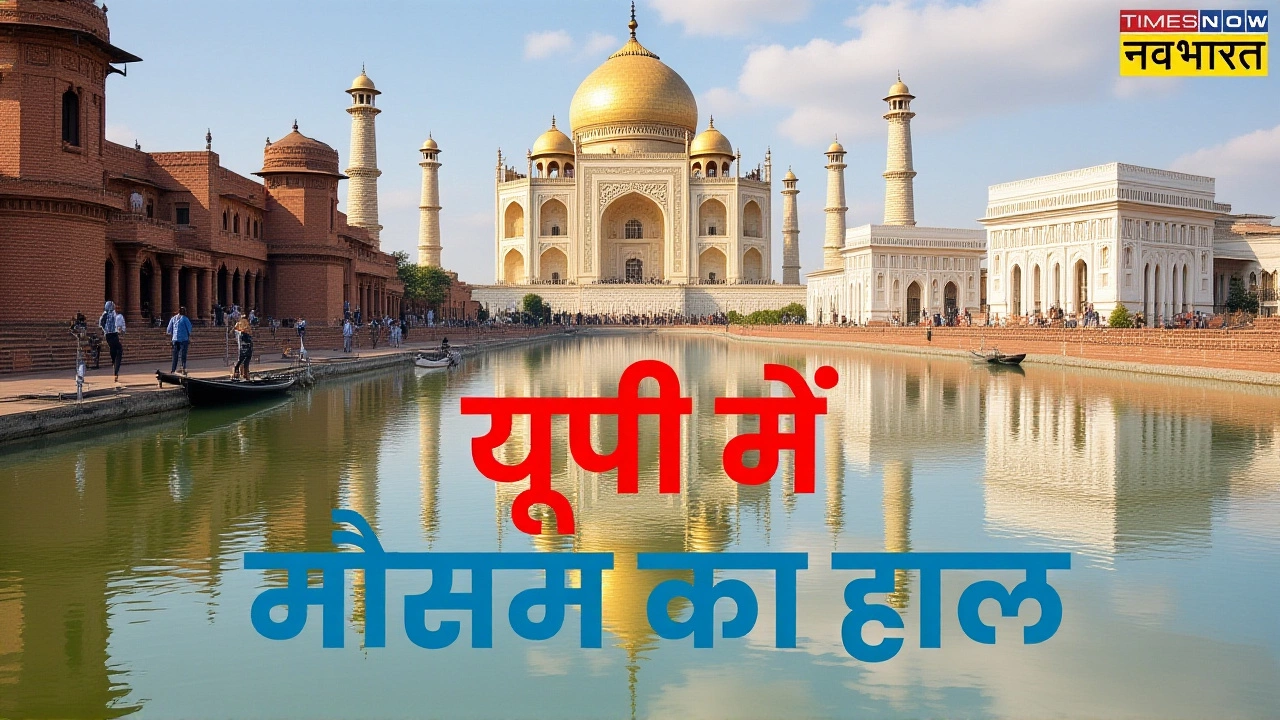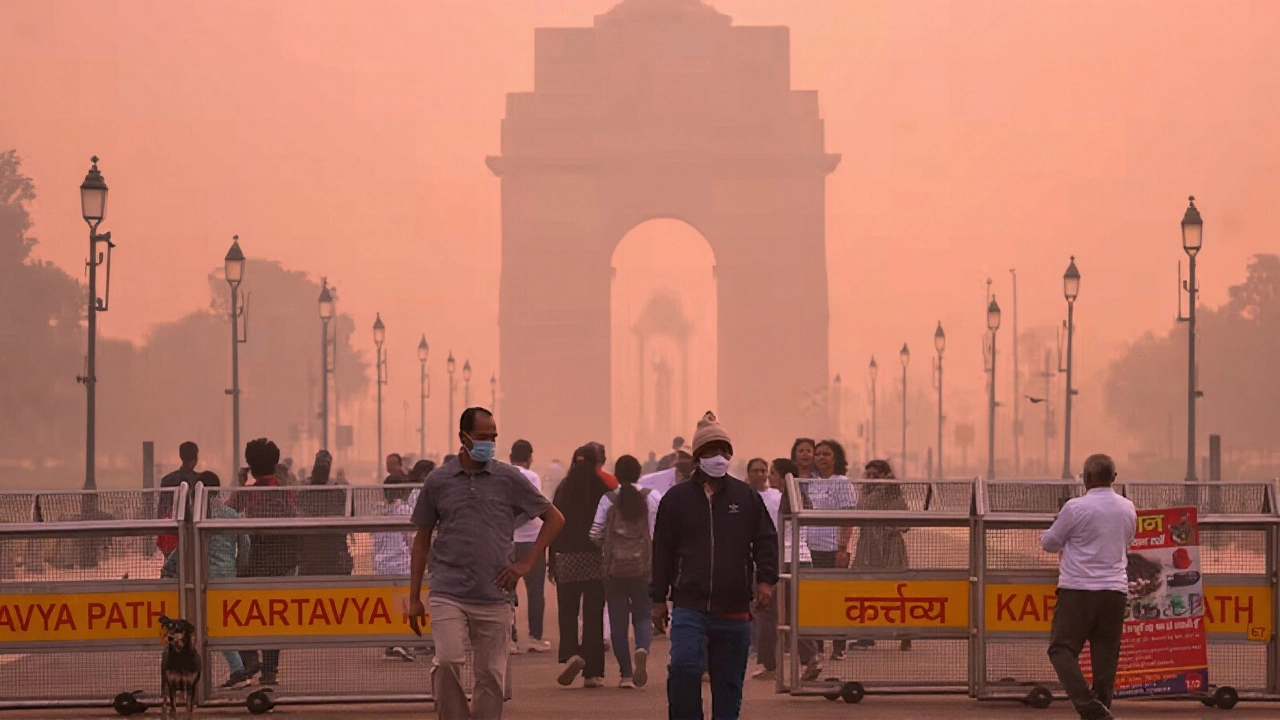Rajasthan Basks in Sunny October 27, 2025 Weather as Autumn Shift Begins
 Oct, 30 2025
Oct, 30 2025
On October 27, 2025, Rajasthan woke up to clear blue skies and a gentle breeze — the kind of day that makes you forget it was once scorching hot enough to fry an egg on the pavement. The India Meteorological Department (IMD) confirmed what locals already suspected: after months of lingering monsoon humidity, autumn has finally arrived in earnest. Temperatures across the state hovered between 19.7°C and 35°C, with most areas seeing no rain and near-perfect visibility. It wasn’t just a good day — it was the kind of day that turns tourists into regulars.
Autumn Arrives Without Warning
October has always been a quiet turning point in Rajasthan, but this year, the shift felt sharper. Where September still clung to dampness and unpredictable showers, October 2025 delivered crisp mornings and sun-drenched afternoons in equal measure. In Jaipur, the state capital, highs reached 32.9°C — a noticeable drop from the 38°C spikes just two weeks prior. Nights cooled to 19.7°C, making it the first time since June that residents needed a light shawl after sunset. MakeMyTrip didn’t miss the opportunity, calling it "the sweet spot of the year" for heritage tourism. With nearly 11 hours of sunlight daily and only 11mm of rain expected for the entire month, the city’s forts, palaces, and street markets were packed with visitors from Delhi, Mumbai, and even abroad.
Regional Variations: From Bharatpur to Sri Ganganagar
While the state shared a general pattern of sunshine and cooling, local differences mattered. In Bharatpur, Wisemeteo.com predicted a textbook perfect day: 82°F (27.8°C), 0% chance of rain, and a whisper-thin 1 mph wind from the southeast. Meanwhile, in the northernmost district of Sri Ganganagar, where temperatures had averaged 35.1°C in early October, the 27th saw a dip to 31°C — still warm, but no longer oppressive. Climate-Data.org noted that mid-month highs had already fallen from 36.5°C to 35°C, and by the 27th, the trend was accelerating. By contrast, southern regions like Udaipur and Jodhpur saw slightly lower daytime peaks — around 30°C — thanks to higher elevation and proximity to the Aravalli Range.

What the Forecasters Saw
Multiple platforms painted a consistent picture. AccuWeather showed a steady decline: early October highs near 102°F (38.9°C) had slipped to 88°F (31.1°C) by the 27th, with nighttime lows falling from 84°F to 66°F. Weather25.com emphasized the lack of precipitation — "no rainy days in Rajasthan during October" — while cautioning visitors to hydrate. EaseWeather.com added a subtle warning: October 28 might bring "patchy rain possible," a rare blip in an otherwise dry stretch. Even PredictWind.com, typically focused on maritime winds, described Jaipur’s October as "mild with breezy conditions and a moist climate," suggesting humidity had retreated but not vanished.
Why This Matters for Tourism — and Locals
For Rajasthan’s economy, this weather isn’t just pleasant — it’s profitable. MakeMyTrip has long labeled October through March as the "peak season" for heritage tourism, and this year’s forecast is textbook perfect. Hotels in Jaipur reported 92% occupancy on the 27th, up from 68% in September. Tour guides in Jaisalmer said bookings for camel safaris had surged by 40% compared to last year. But it’s not just about tourism. Farmers in the western districts are breathing easier — no monsoon delays, no waterlogging. School schedules, outdoor markets, and evening festivals all benefit from the predictable rhythm of warm days and cool nights.

What Comes Next
The next two weeks will be the real test. If the cooling trend continues — as models suggest — November could see lows dip below 15°C in some areas, bringing the first real chill of winter. The IMD has already flagged November 10 as a potential turning point for frost advisories in northern Rajasthan. For now, though, the state is in a sweet spot: golden light, clear skies, and temperatures that don’t demand air conditioning or heavy woolens. It’s the kind of weather that lingers in memory. Locals call it "October magic." Visitors? They just call it perfect.
Frequently Asked Questions
Why is October considered the best time to visit Rajasthan?
October marks the end of monsoon humidity and the start of cooler, drier weather, with daytime highs around 30–35°C and nighttime lows near 20°C — ideal for exploring forts and desert sites without heat exhaustion. With nearly 11 hours of sunlight and under 11mm of monthly rain, conditions are optimal for tourism, which is why platforms like MakeMyTrip label it "peak season."
How does the temperature change from early to late October in Rajasthan?
Early October highs average 36.5°C (97.7°F), especially in places like Sri Ganganagar, but by the 27th, they’ve dropped to around 31°C (87.8°F). Nighttime lows fall from 21.4°C to 19°C, creating a wider daily range — perfect for morning and evening activities. This cooling trend continues into November, with some areas seeing lows near 15°C.
Is there any risk of rain in Rajasthan on October 27, 2025?
No. Every major forecasting service — including IMD, Wisemeteo, and Weather25.com — confirms zero precipitation for October 27 across Rajasthan. While EaseWeather noted "patchy rain possible" on the 28th, it was an isolated, low-probability anomaly. October as a whole is historically dry, with less than 15mm of rain statewide.
How do weather patterns differ between Jaipur and Bharatpur?
Jaipur’s elevation and urban heat island effect keep it slightly warmer, with highs around 32.9°C compared to Bharatpur’s 27.8°C on October 27. Bharatpur, closer to wetlands and the Chambal River, sees marginally higher humidity but still zero rain. Both locations enjoyed full sunshine, but Jaipur’s larger tourist infrastructure means more people are out enjoying the weather.
What impact does this weather have on local agriculture?
The dry, stable conditions allow farmers to harvest rabi crops like mustard and wheat without rain damage. With no monsoon delays and no flooding, soil moisture remains adequate from residual monsoon rains, reducing irrigation needs. In districts like Jodhpur and Barmer, this has meant lower energy costs for pumps and higher yields.
Will this sunny pattern continue into November?
Yes — but with a chill. The IMD forecasts a continued decline in temperatures, with November highs dropping to 28–30°C and lows approaching 15°C in northern districts. Frost advisories may be issued by mid-November in places like Sri Ganganagar. The dry, sunny pattern, however, is expected to persist through December, making it another ideal month for travel.